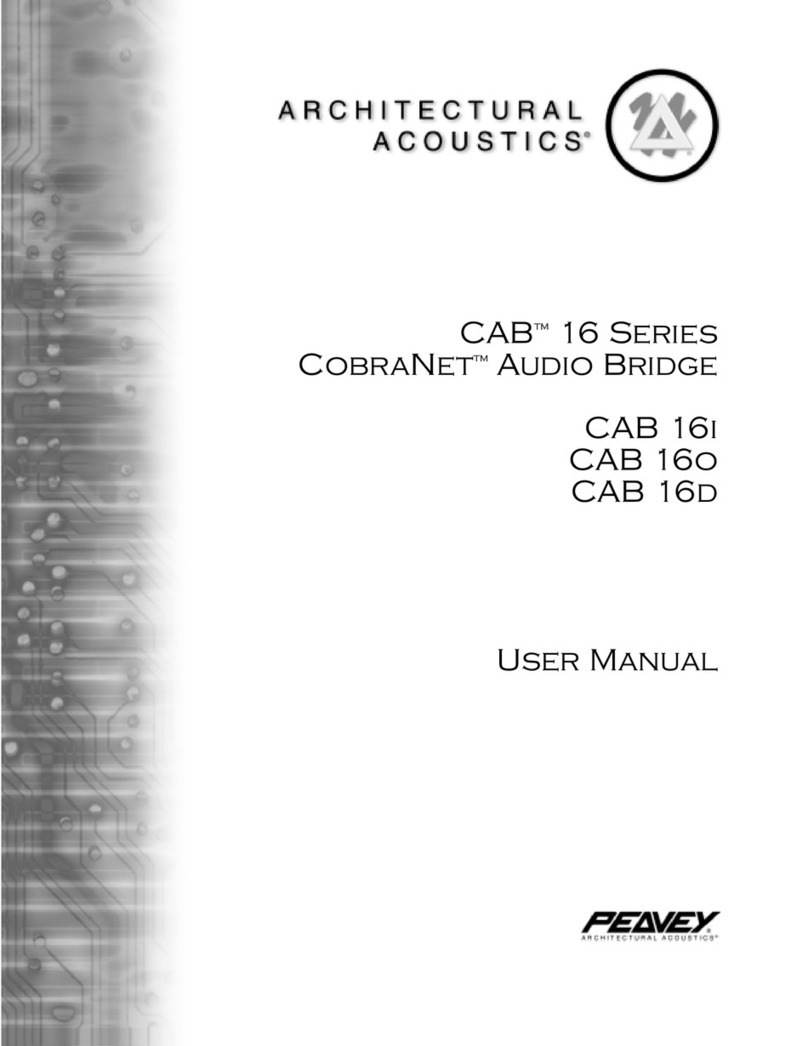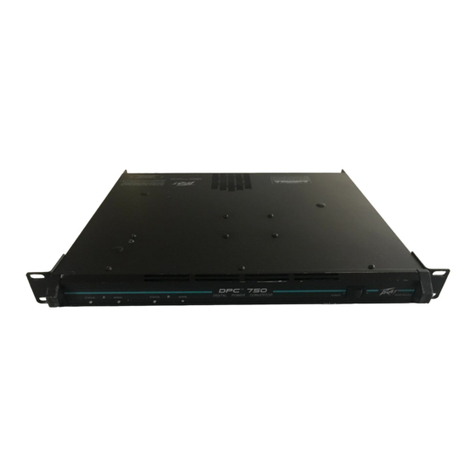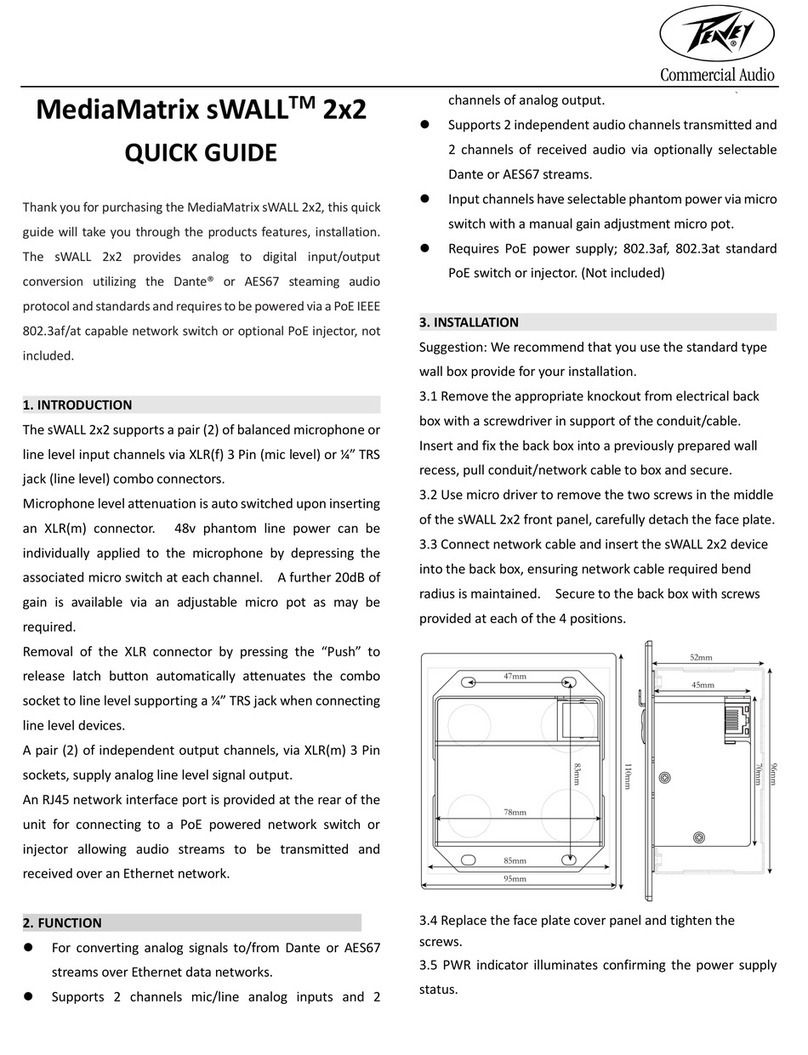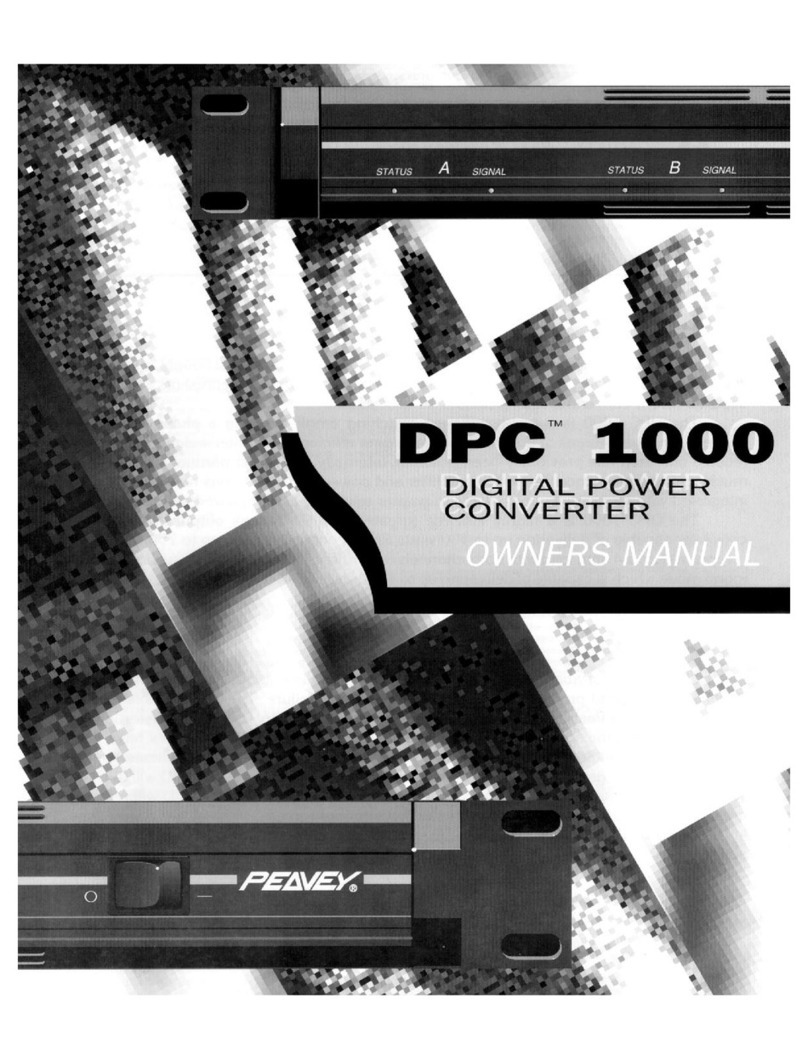68 BASS PLAYER ?OCTOBER 2000
Soundroom
Soundroom
By Terry Buddingh
Construction: 4
Back in the ’80s Peavey began
experimenting with “switch-
mode”power-ampdesigns,which
use digital technology to supply
large amounts of power without
thehugetransformersandcapac-
itors required by conventional
amps. The flagship DPC 1400X
uses the company’s patented
phase-modulatedcircuitrytopro-
vide unprecedented power in a
single-rackspace package. Its
austere exterior is no indication
ofthesophisticateddesignwork
hidden inside.
Alargeglass-epoxyprintedcir-
cuitboard board spans the full
width of the rugged steel chassis,
housing the power supply and
extensive filtering components
required by a switch-mode amp.
AsmallerPCboardholdsanabun-
danceofICsandmodernsurface-
mount components. Silicone
adhesivesecuresthelargetoroidal
inductors,whilethesmallerinduc-
tors are soldered directly to the
board. A low-profile cooling fan
draws air through the back panel
and forces it through a channel-
shaped heatsink, exhausting it
through a front-panel vent.
Electronics: 4.5
With today’s proliferation of
5-strings and low alternate
tunings, power has never been
more important—extra power is
required to faithfully reproduce
extra-low notes. Solid-state class
AB amps have been the standard
for many years; these must use a
largepower-supplytransformerto
provide the high current needed
to run its output devices, as well
as large capacitors for current
storageandfiltering.Thisexplains
the large size and weight of high-
poweredconventionalamplifiers.
An alternative is to raise the 120-
volt, 60Hz line to a much higher
frequency.TheclassD1400Xuses
a switching power supply to run
at280kHz,where asmallertrans-
former and capacitors can do the
sameworkasclassABamps’heavy
components.
Most class D amps use pulse-
width modulation to control the
output stage. Since the output
devicesareconstantlybeingturned
on and off at different rates, the
amp’s performance is ultimately
limited by the speed, or rise time,
ofthedevicesused.Peaveyavoided
this problem by using two non-
changing pulses that vary in their
phaserelationshipratherthantheir
width. This elegant solution also
enables the DPC 1400X’s output
MOSFETstobedrivenwithasim-
pler circuit. The audio signal gets
amplified with the switching sig-
nal; then the high-frequency
switching signal gets filtered out
beforeitreachestheamp’soutput.
Theresultisunheard-ofpowerin
a smaller and lighter package.
TheDPC1400Xalsoincludes
Peavey’sDDT (DistortionDetec-
tion Technique) protection cir-
cuitry,whichcomparestheamp’s
outputwith itsinput andreduces
theinternalgainwhenclippingor
current limiting occurs. You can
defeat the DDT via a front-panel
button.
Ease of use: 5
Peaveyspecializesin user-friendly
products, and despite the DPC
1400X’ssophisticateddesign, it’s
noexception. All the controls and
Peavey DPC 1400X Power Amp
Bi-colored
STATUS LED Input sensitivity knob
(31 detent positions) Bi-colored
SIGNAL level
LED
Output MODE
button DDT
DEFEAT/ENABLE
button
Each channel’s output offers a set of binding posts and a pair of 1/4" jacks. The inputs use a combo connector to accommodate balanced XLR
or 1/4" TRS plugs; they also accept 1/4" mono plugs for unbalanced operation. 1/4" THRU jacks allow easy connection of additional amplifiers.























